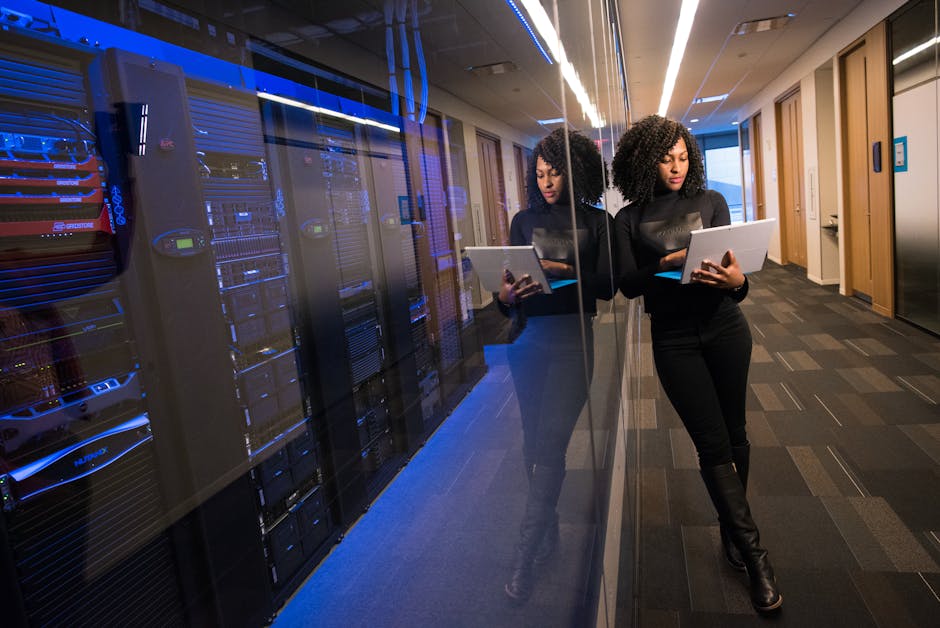Securing Remote Work Environments: A Comprehensive Guide
Welcome to the era of remote work, where flexibility and convenience are paramount. With the rise of telecommuting, ensuring the security of remote work environments has become a critical concern for businesses and individuals alike. As we navigate this new landscape, it’s essential to understand the various strategies and best practices that can help protect data, privacy, and overall security in a remote work setting. In this comprehensive guide, we will delve into the intricacies of securing remote work environments, exploring key concepts, challenges, and solutions to safeguarding sensitive information in a digital age.
The Evolution of Remote Work

Remote work is not a new phenomenon, but its prevalence has soared in recent years, fueled by advancements in technology and changing attitudes towards work-life balance. The COVID-19 pandemic further accelerated this trend, with organizations worldwide transitioning to remote work to ensure business continuity and employee safety. As remote work becomes the new norm, companies must adapt their security measures to protect against a host of cyber threats.
The Risks of Remote Work

Working outside the traditional office environment exposes individuals and organizations to a range of security risks. From unsecured Wi-Fi networks to phishing attacks and data breaches, remote workers are vulnerable to various threats that can compromise sensitive information. It’s crucial to identify these risks and implement robust security measures to mitigate potential vulnerabilities.
Securing Remote Devices

One of the first steps in securing remote work environments is ensuring the safety of devices used for work purposes. This includes laptops, smartphones, and tablets, which can be easy targets for cybercriminals. By implementing encryption, strong passwords, and multi-factor authentication, organizations can bolster the security of remote devices and protect against unauthorized access.
VPN and Network Security

Virtual Private Networks (VPNs) play a crucial role in securing remote work environments by creating a secure connection to the corporate network. VPNs encrypt data transmitted over public networks, shielding it from prying eyes and potential threats. Additionally, organizations can enhance network security by implementing firewalls, intrusion detection systems, and regular security audits to identify and address vulnerabilities.
Employee Training and Awareness
Human error remains one of the leading causes of security breaches in remote work environments. Educating employees about cybersecurity best practices is essential to mitigate this risk. From recognizing phishing emails to practicing good password hygiene, training programs can empower remote workers to make informed decisions and protect sensitive data.
Cloud Security
Cloud technology has revolutionized the way we store and access data, enabling remote workers to collaborate seamlessly from anywhere in the world. However, the cloud also presents security challenges, such as data breaches and misconfigurations. By adopting robust encryption, access controls, and data backup strategies, organizations can secure their cloud infrastructure and safeguard against potential threats.
Endpoint Security
Endpoints, such as laptops and mobile devices, are often the weakest link in the security chain. To protect against malware, ransomware, and other cyber threats, organizations should deploy endpoint security solutions that monitor and secure devices in real-time. By implementing endpoint detection and response (EDR) tools, organizations can proactively detect and respond to security incidents before they escalate.
Secure Communication Tools
Communication is essential in remote work environments, but it must be done securely to prevent eavesdropping and interception. Encrypted messaging platforms, secure email services, and virtual private conferencing tools can help protect sensitive communications from unauthorized access. By leveraging encrypted communication tools, remote workers can ensure the confidentiality and integrity of their conversations.
Expert Opinions
According to cybersecurity expert Dr. Jane Smith, “Securing remote work environments requires a multi-faceted approach that combines technology, policy, and training. Organizations must prioritize data protection and privacy to safeguard against evolving cyber threats.” Dr. Smith’s insights highlight the importance of a holistic security strategy that addresses the unique challenges of remote work.
Conclusion
To wrap things up, securing remote work environments is a complex yet essential task in today’s digital landscape. By implementing robust security measures, educating employees, and staying vigilant against emerging threats, organizations can protect sensitive information and ensure the integrity of remote work operations. As we continue to embrace the benefits of remote work, let’s prioritize security and privacy to safeguard against potential risks and vulnerabilities. Remember, a secure remote work environment is a productive and resilient one.




